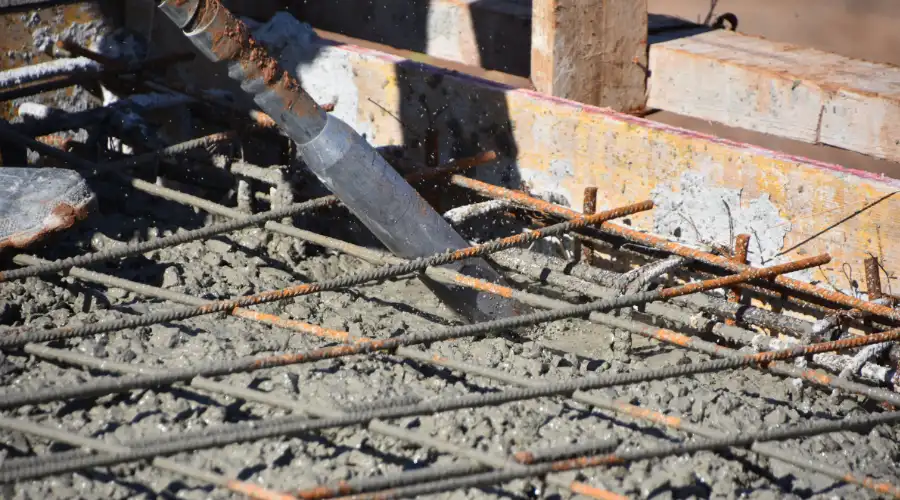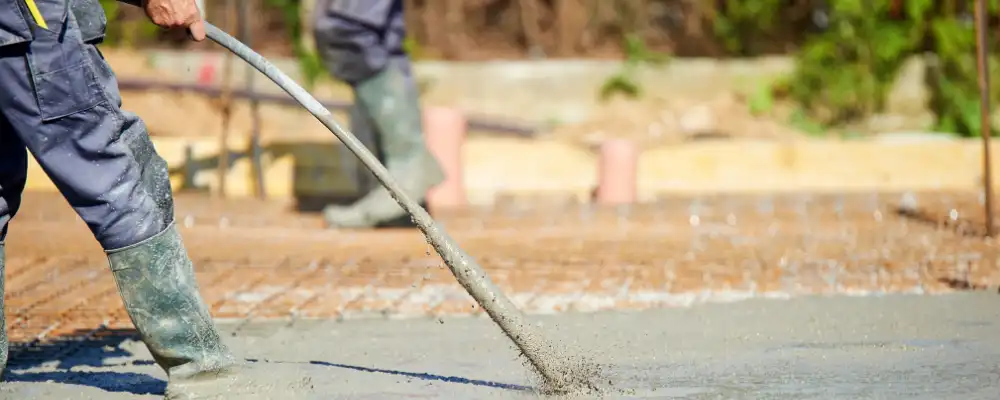When placing concrete, structural engineers and contractors must pay close attention to the structural integrity. One of the most common issues during placement is the presence of air pockets and voids within the fresh concrete. These imperfections can significantly compromise the strength and durability of the finished structure. A needle vibrator offers an effective solution to this problem. It plays a critical role in the concrete compaction process by eliminating trapped air and reducing voids in the mix, thereby enhancing the concrete’s density, strength, and overall performance.
What is a Needle Vibrator?
A needle vibrator is a type of mechanical equipment designed to consolidate freshly placed concrete. A needle vibrator has a vibrating head, also known as a needle or poker, attached to a power unit via a flexible shaft. The needle vibrator operates by generating high-frequency vibrations that are then transmitted into the concrete. When concrete is vibrated, any air bubbles and excess water are released from the concrete paste. This minimizes the potential for honeycombing and improves the homogeneity of the concrete mix.
Importance of Compaction in Concrete
Compaction is essential in concrete construction because it is a method for removing trapped air in concrete and provides denser, stronger materials. Well-compacted concrete will be stronger, less permeable and act better when subjected to external environmental loading. Concrete that has not been properly compacted will have voids in it that will create weak areas that can potentially be a structural deficiency in the system and cause failure
Applications of Needle Vibrators in Construction

Needle vibrators are excellent tools for many types of construction applications where compaction of concrete is essential to achieve the necessary strength and durability. Below are examples of some application types where needle vibrators are found:
- Slabs and Floors: Needle vibrators are used to compact large areas of concrete, such as slabs and floors. This is particularly important for slabs that will receive heavy loads and need excellent load-bearing capabilities.
- Columns and Walls: The application of concrete in columns and walls is a typical instance where the use of needle vibrators contributes towards a solid and compact placement of concrete. The vibrator emits vibrations that propagate through the concrete to a maximum depth, ensuring the mix fills behind the formwork and preventing the build-up of air pockets, voids, or damaged concrete structure.
- Precast Elements: Needle vibrators are used extensively in precast concrete production. These vibrators help to compact the mix into molds, ensuring uniformity and strength in precast components such as beams, walls, and panels.
- Footings: Compaction is critical to an effective footing, which is needed to be a solid base for the entire footprint of the structure. Needle vibrators are effective in removing air from the concrete blend, yielding a denser and now stronger foundation.
- Tall Buildings: Needle vibrators, are used when constructing tall buildings to ensure that the concrete is compacted effectively on every floor.
- Road and Bridge Construction: Needle vibrators compact the concrete on decks and pavements when constructing roads and bridges.
- Concrete Retaining Walls and Dams: Needle vibrators can consolidate the concrete mix when building retaining walls or dams, ensuring that the mix will set at a suitable density and consistency.
How to Use a Needle Vibrator for Concrete Compaction?
Follow the steps to Use a Needle Vibrator for Concrete Compaction
1. Preparation
Before you start working, make sure that the needle vibrator is working properly. The power source (electric or fuel) should be checked, as well as the security of all connections. The vibrator head should be cleaned to remove any debris from the previous use to avoid mixing the new concrete.
2. Insertion
Insert the vibrating needle vertically into the freshly poured concrete. The vibrator should sink naturally due to its weight. Avoid tilting or forcing the needle, as it may disrupt even compaction and leave voids in the concrete.
3. Vibration Time
For a dry mix, extend the vibration time slightly to ensure full compaction. A wet mix requires less time. Proper vibration removes air bubbles, enhancing concrete strength and consistency.
4. Removal
Remove the vibrator slowly at a rate of approximately 1 inch (25mm) per second to avoid disturbing the concrete. Quick removal can cause segregation and air pockets.
5. Overlap
Ensure that each vibrator placement overlaps the previous by 25–30% to achieve uniform compaction across the entire surface.
6. Finish
Once the surface becomes glossy and air bubbles cease to surface, the concrete is sufficiently compacted. At this stage, remove the vibrator. Proper usage ensures a strong, durable concrete structure with minimal air gaps.
Conclusion
The needle vibrator is an important device in today’s concrete construction to ensure that the expectations of strength and durability of a structure are achieved. Understanding the needle vibrator, its application, and use techniques can help construction workers improve their project outcomes. For an effective construction solution, consider partnering with a reputable construction company like Brick & Bolt, which can provide skilled professionals and materials to ensure a successful construction.

